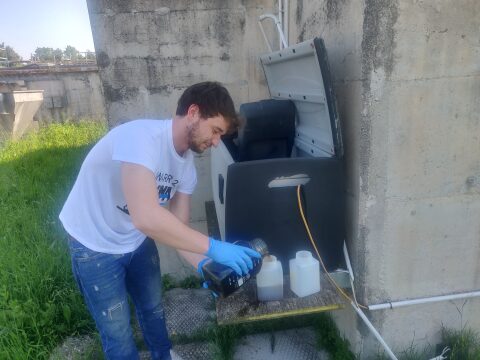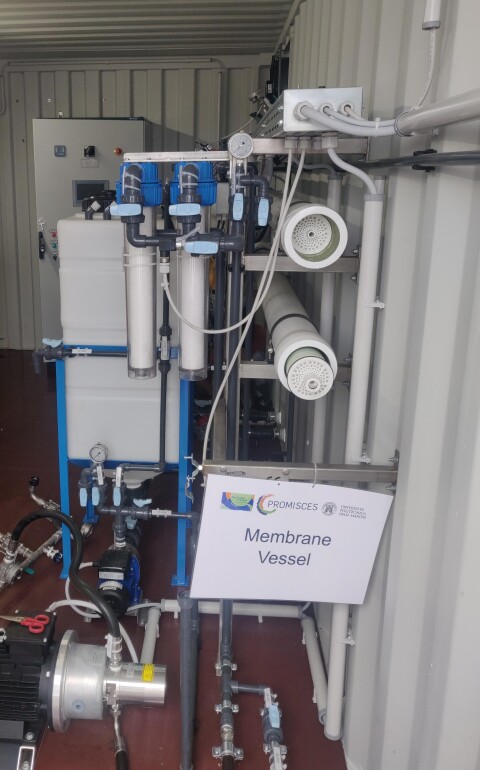Assessment of PFAS pathways during landfill leachate treatment
Partners of the Italian cluster of the EU project PROMISCES (i.e., UNIVPM, Acea Elabori and SIMAM) are focusing their research activities on the investigation of the removal of PFAS during conventional and advanced treatments of landfill leachate to assess possible pathways for environment contamination. Particularly, new technological solutions will be developed to completely eliminate these compounds from solid and liquid matrices avoiding the uncontrolled diffusion into the environment of these persistent and mobile chemicals.
Today, it is common practice to discharge landfill leachate, after initial treatment, into municipal wastewater treatment plants. Conventional treatments have demonstrated to be ineffective for PFAS removal and the presence of precursors in the influent may lead to an increase of PFAS concentrations in the effluent after biological transformation. Thus, PFAS from landfill leachate can be released into the aquatic environment through WWTPs effluents. In addition, they can be adsorbed into municipal sewage sludges limiting their agronomic reutilization.

Sampling of landfill leachate at the treatment plant (Source: UNIVPM)

Installation of the NF membrane (Source: UNIVPM)
During PROMISCES project, sampling campaigns for the determination of PFAS fate were implemented in three full-scale leachate treatment plants in Italy. The first plant includes conventional treatments with clariflocculation, biologic reactor and ultrafiltration membranes. The second plant is a conventional leachate treatment that operates a biologic reactor with intermittent aeration (IA). In this case, the produced waste sludge is digested and dewatered together with the sewage sludge of the connected municipal wastewater treatment plant (WWTP). The last monitored leachate treatment plant includes several advanced treatments: i) pre-treatment sections with flotation and sand filter, ii) double-pass reverse osmosis (RO), and iii) RO concentrate treatment line. Mass balance studies were accomplished to evaluate the load of PFAS in the treated water and in the produced waste sludge. Preliminary results showed an important presence of PFAS in effluents treated by conventional treatments and significant accumulation of PFAS in sludge. Advanced treatment technologies as reverse osmosis (RO) can provide a “PFAS-free” permeate. However, high concentrations of PFAS are accumulated in the concentrate, which represent a serious threat for the environment, and high energy and chemicals consumptions are required for the RO operation.
Recently, a pilot plant that includes nanofiltration (NF) treatment and reverse osmosis (RO) treatment, has been installed in one of the mentioned full-scale plants for the treatment of landfill leachate. The scope of the experimental activities is the comparison of the performance of these two technologies (i.e., NF and RO) to treat landfill leachate in terms of PFAS removal and operational costs (energy and chemicals).
